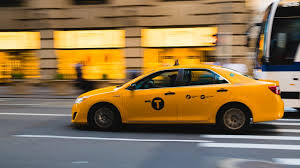
Over the summer, the New York City Council passed a series of measures empowering the city – through the Taxi and Limousine Commission (TLC) – to monitor and aggressively regulate ride-hail apps like Uber and Lyft.
The headline-grabber is that the city will pause on handing out new licenses for drivers, which represents a first-of-its-kind cap on licenses.
Further, the city, and TLC, will have the power to continue to cap and control companies, drivers and cars based on any number of factors. These include the time cars are in use, where cars and drivers are, what fares are, how much drivers make, traffic, and on and on.
The cap is just the beginning of a slate of very significant powers city government now has to micromanage ridesharing.
The TLC can now regulate the number of cars in perpetuity. They can limit cars to regions of the city. This could set up absurd situations where drivers aren’t allowed to pick up people in certain areas of high demand, while they are stuck in a low-demand area.
They can decide what companies have to pay drivers, and what fares they must charge – which sounds an awful lot like price controls.
The new laws allow the TLC to establish a “vehicle utilization standard” and define a new entity, “high-volume for-hire” services, a.k.a. Uber, Lyft, and any other company arranging 10,000-plus rides per-day.
The TLC can change the vehicle utilization standard going forward, so to some extent they will make and enforce the rules.
Ridesharing in New York City is now at the whim of government bureaucracy and the city council. How much slower and more expensive it becomes to get a ride is no longer in the hands of free enterprise and consumers.
Interestingly, ride-hail companies reportedly offered to create a $100 million fund to help cover taxi drivers who have faced declining medallion volumes – which was due to decades of poor city policy. That was rejected, as was congestion pricing (tax on driving to certain areas of the city). But of course, congestion pricing is being pushed by the council speaker anyways on top of the new ridesharing regulation regime.
Highlights from the various bills are outlined below:
Intro 144B
- 12 month pause on new for-hire licenses
- Except for wheelchair accessible vehicles
- Commission (Taxi & Limousine Commission) submits vehicle ridership impact report every 3 months
- Can allow new licenses to aid areas where “services are needed”.
- Establishes “vehicle utilization standard” for standard of efficient use of for-hire vehicles determined by TLC based on time spent, distance traveled, number of passengers
- Study income drivers make, traffic congestion throughout the city, extent to which for-hire vehicles contribute to congestion, traffic safety, vehicle utilization rates, access to services by area, hours drivers are available on service, driver income and well-being, other topics TLC and DoT deem appropriate.
- Based on study TLC will establish vehicle utilization standards for high volume for-hire services (Uber, Lyft) – review standards at least annually
- Review number of for-hire vehicles at least annually and may regulate the number of licenses
- TLC may vary the vehicle utilization standards and licenses based on geographic area, time of day, day of the week, wheelchair accessibility, vehicle emissions, AND OTHER FACTORS TLC deems appropriate
- Requires data be provided to city: driver license number, for-hire license number and station number, location of pick up and drop off, number of passengers, date and time, mileage, itemized fare, toll, surcharge, any deductions company requires, tip, passenger cost, what driver earned; amount of time for-hire vehicles are transporting passengers or awaiting a fare. AND any additional information TLC requires to conduct study.
- TLC to establish penalties from $500 to $1,000. Companies cannot deduct penalties they incur from drivers.
- Establishes minimum payments to drivers.
- Establishes minimum rates of fare.
- Applies only to “high volume for-hire” service.
- TLC establishes rule determining minimum payment calculation
- must consider duration, distance, expenses, vehicle utilization standard, rates of fare, adequacy of for-hire vehicle driver income in relation to expenses
- Also will look at non “high volume for hire” service.
- Based on study from other bill commission will determine whether minimum rates of fare established by commission would alleviate problems identified in study. IF SO the commission is authorized to establish rule on minimum rates of fare.
- (what is the hail exclusionary zone? section 51-03 title 35 rules of the city of New York)
- Review rates every year and can increase them if they want.
- Defines high volume for-hire service, electronic-based, 10,000 rides per day
- New high volume license, license lasts two years, biennial fee set by commission
- License given when service submits a business plan including: number of trips, base station, number of trips expected through black car base for 2 years, projection of number of vehicles needed to operate, average trips per vehicle, geographic areas of the city service intends to serve, ANY other information the commission deems important to consider for license.
- Company must comply with assessment of impact on environment including: traffic congestion, public transit, private vehicles, transit, noise.
- Provides a list of any fees, charges imposed on drivers/owners
- Rates of fare given to commission.
- Provides trip and revenue data: for each trip, driver’s license number, vehicle info, pick up location and drop off, number of passengers, date and time, mileage, date of request, itemized fare including fare, toll, surcharge, commission rate, gratuity, passenger payment, driver compensation; amount of time vehicle is connected to electronic platform, time with passenger vs. time without a passenger.
- $10,000 fine for driving without a license.
- Reduced fee for accessible cabs from $550 to $275
- Establishes fines and penalties for driver violations, from $200 to $10,000, as well as license revocation, depending on violation.

